While some are solitary, the majority of coral species are colonial organisms comprised of hundreds to thousands of tiny, individual, soft-bodied animals called polyps. Reef-building polyps contain microscopic, photosynthetic algae within their cells called zooxanthellae, which provide the coral with food from photosynthesis. Corals are critical parts of reef ecosystems. They provide coastline protection from severe weather and erosion and food for a wide range of marine animals.
In a balanced, healthy reef ecosystem, animals that feed on coral can ensure long-term coral health and diversity. However, due to the effects of human activity, such as overfishing, some coral colonies are suffering from an out-of-balance ecosystem and over-predation.
In this guide, we’ll describe six marine animals that eat coral. Read on to learn more!
1. Parrotfish (Scarinae)
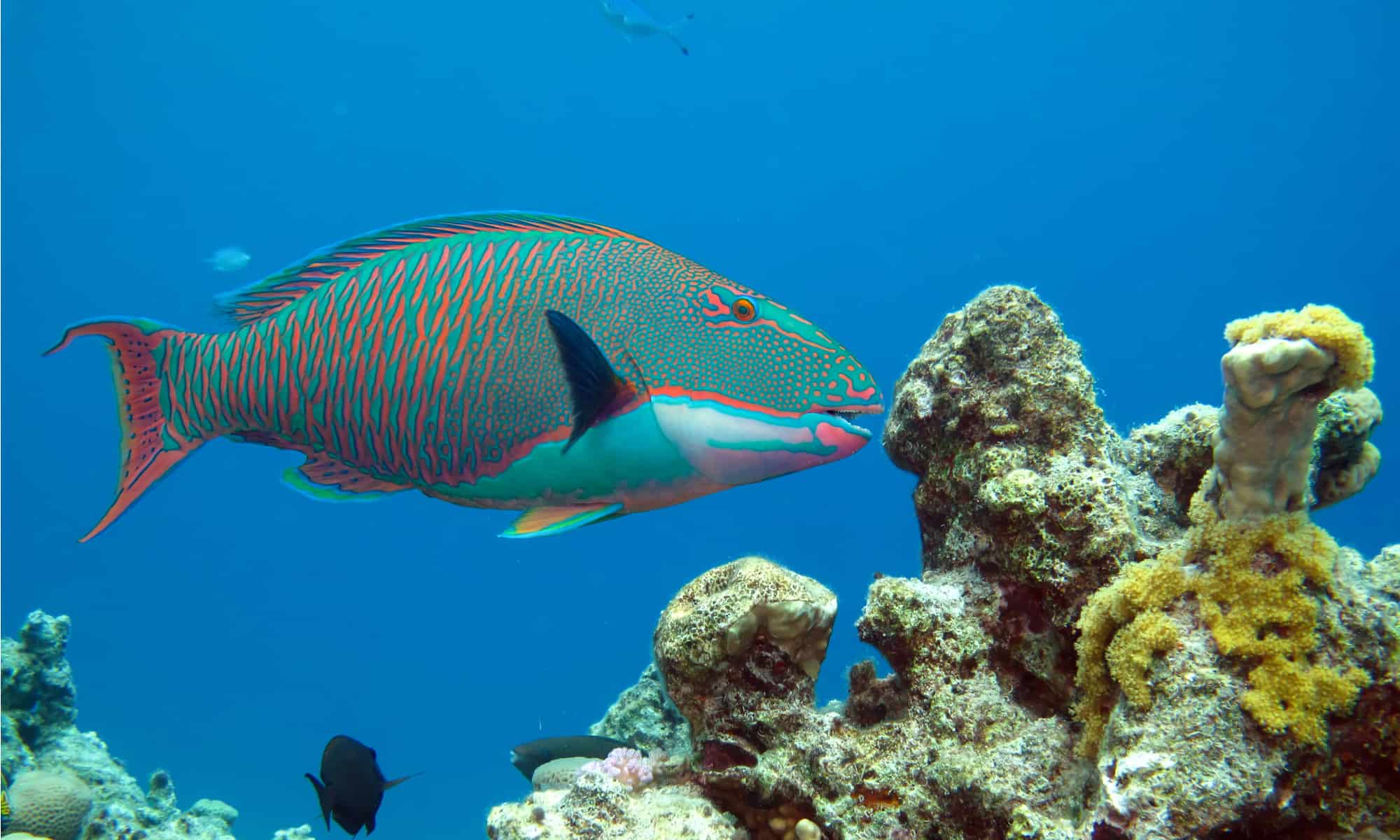
Parrotfish’s insanely strong teeth are perfect for chomping down on reef-forming coral.
©Cigdem Cooper/Shutterstock.com
80 species of parrotfish belong to the subfamily Scarinae. These typically brightly colored fish inhabit coral reef habitats around the world. Their common name derives from the beak-like teeth of parrotfish, which scientists recently discovered contains one of the toughest biominerals in nature, called fluorapatite.
With these wildly strong jaws, parrotfish can readily scrape and chomp down on the hard calcium carbonate skeleton of reef-forming corals (hermatypic). While they can easily eat all parts of the coral, their diet relies on the algae that grow inside the coral polyps.
2. Animals That Eat Coral: Triggerfish (Balistidae)
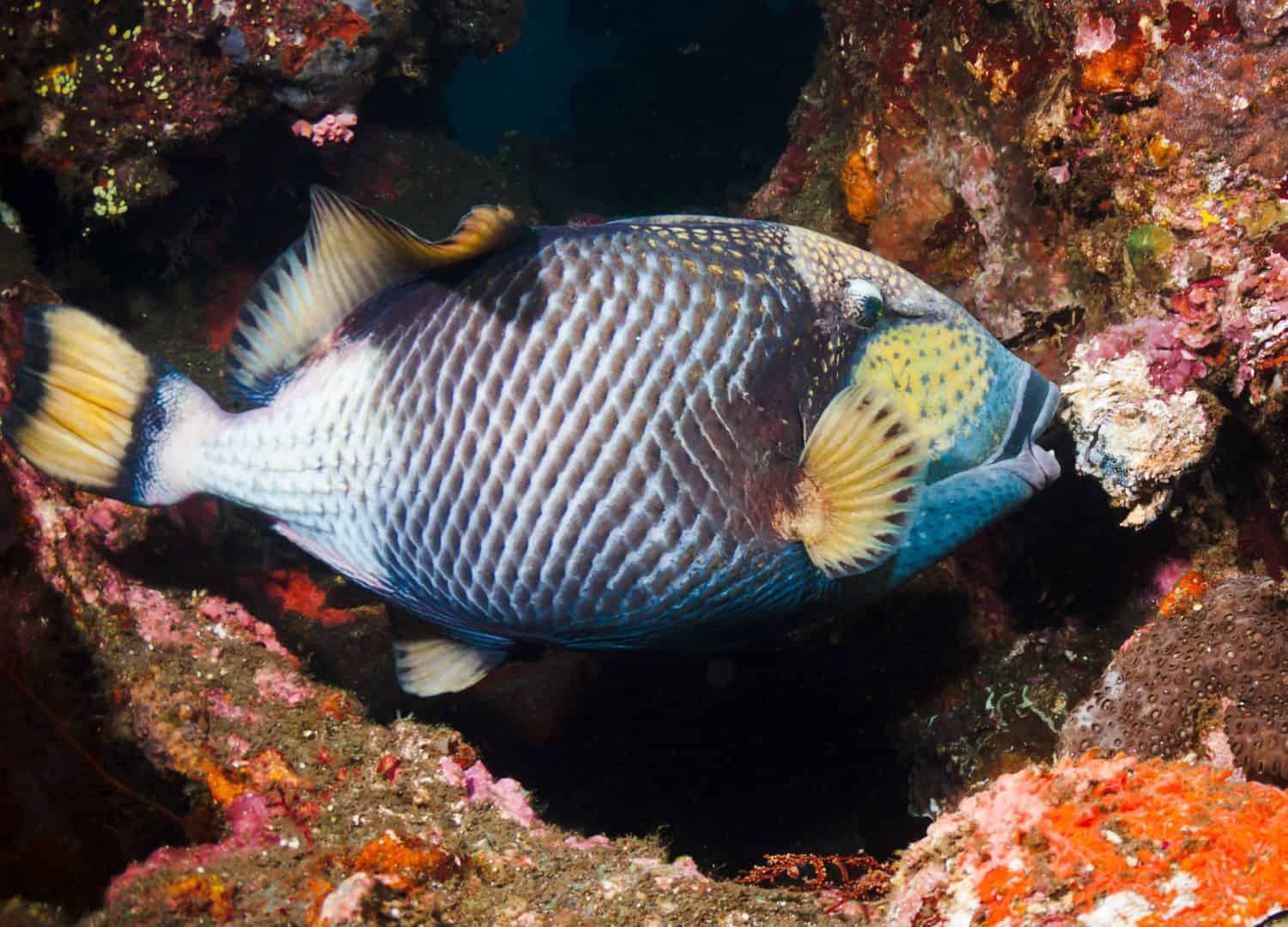
Several species of reef-inhabiting triggerfish ingest live coral as they seek out algae and tiny invertebrates.
©DJ Mattaar/Shutterstock.com
About 40 species of triggerfish make up the Balistidae family. They inhabit tropical and subtropical oceans around the world, and most species live and feed in coral reef environments. Reef-inhabiting triggerfish are highly versatile in their diet and will prey upon small crustaceans, worms, brittlestars, urchins, mollusks, and fish.
Larger species, such as the titan triggerfish (Balistoides viridescens), commonly bite off pieces of branching corals, such as those in the Seriatopora genus, to consume algae and tiny invertebrates living on the coral.
3. Butterflyfish (Chaetodontidae)
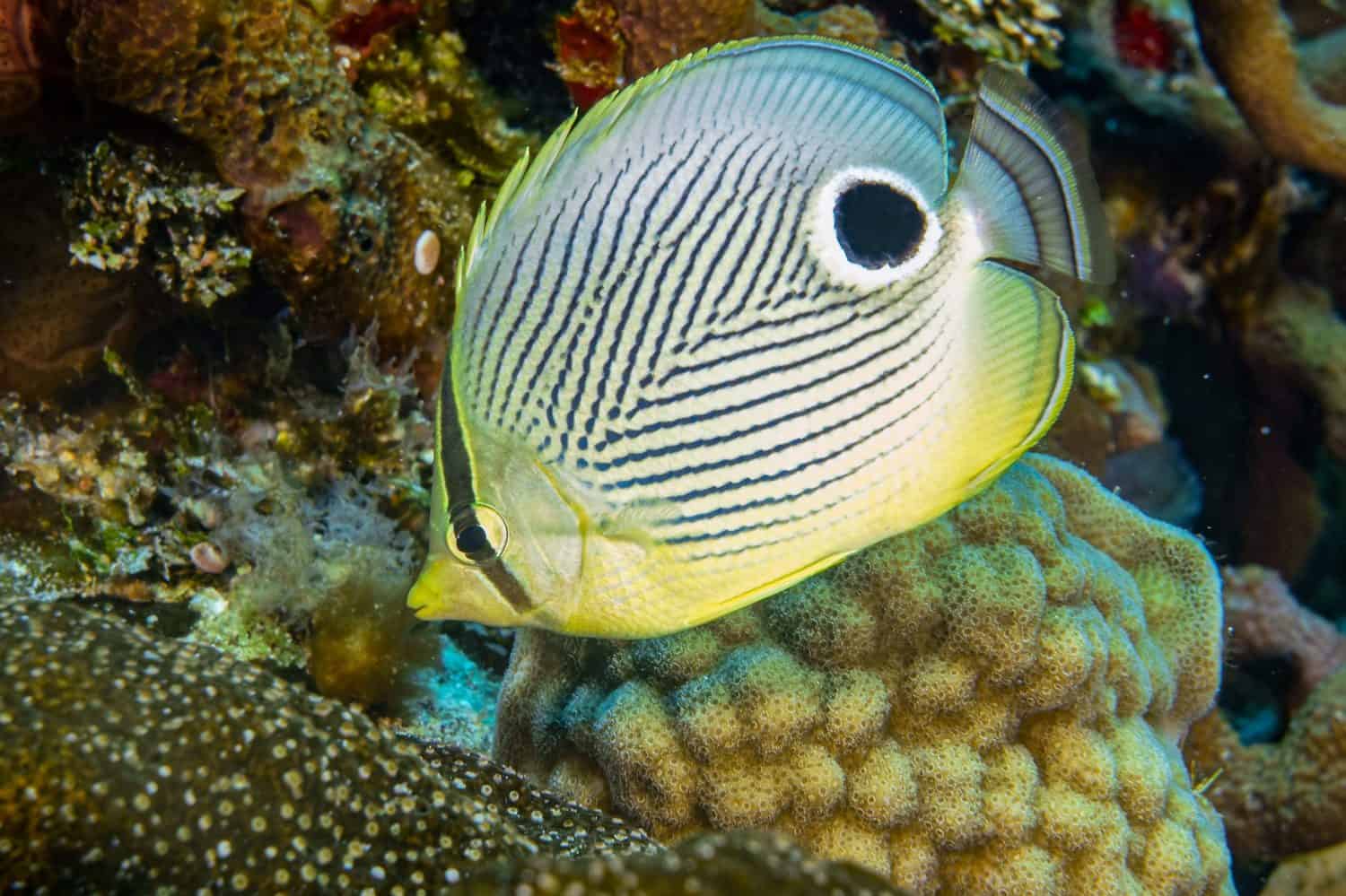
Some species of butterflyfish are obligate corallivores, feeding primarily on live coral polyps, coral-inhabiting algae, and the coral surface mucus layer.
©jwscuba/Shutterstock.com
Approximately 129 species of butterflyfish in the Chaetodontidae family inhabit shallow, tropical reefs of the Atlantic, Indian, and Pacific Oceans.
Some species of butterflyfish have a non-specialist diet comprising of coral, algae, and small marine invertebrates. Others, such as the golden butterflyfish (Chaetodon aureofasciatus), are obligate corallivores with a specialized diet of live coral polyps. The foureye butterflyfish (Chaetodon capsitratus) feeds upon a mucus-like layer that corals secrete to provide disease protection and aid in trapping microscopic food particles.
4. Animals That Eat Coral: Nudibranchs (Nudibranchia)

Coral-eating nudibranchs are primarily within the
Phestillagenus.
©DiveIvanov/Shutterstock.com
Nudibranchs are comprised of at least 3,000 species of shell-less marine mollusks in the order Nudibranchia. A large number of them reside in coral reef habitats in the Indian and Pacific Oceans. These animals often have specialized diets depending on their genus or species.
Nudibranchs in the genus Phestilla are the most common predators of live coral, primarily targeting the soft tissues of hard corals. Species in Phestilla tend to be prey-specific. The species, Phestilla subodiosa, for example, target montipora and anacropora coral. Phestilla sibogae only feed on corals in the genus Porites. Phestilla goniophaga primarily chows down on stony corals from the Gonipora genus.
5. Crown-of-Thorns Starfish (Acanthaster spp.)
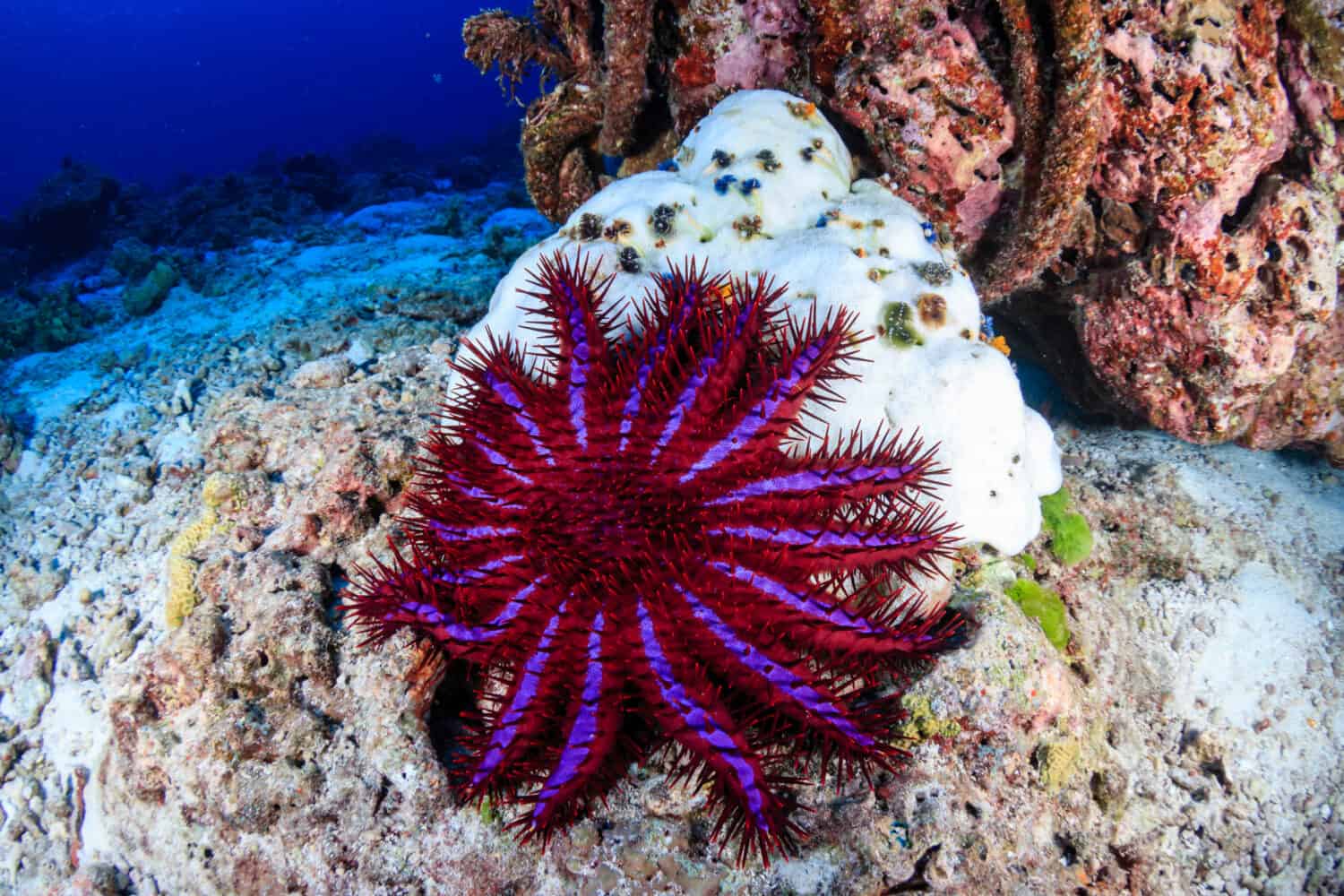
The crown-of-thorns
starfish
is currently decimating coral reef colonies at an alarming rate.
©Richard Whitcombe/Shutterstock.com
At least four species of crown-of-thorn starfish exist within the Acanthaster genus. These spiny, venomous, and tenacious starfish can cause serious damage to coral reef colonies throughout the Indo-Pacific region. Population explosions of these starfish can result in up to 90% loss of reef-building coral in affected areas.
Just one adult crown-of-thorn starfish can eat up to 107 square feet of coral per year. They tend to feed upon fast-growing branching and plate corals, covering the surface with digestive enzymes. This process essentially converts coral tissue into a soup that the starfish can ingest.
Overfishing of the crown-of-thorns primary predators, such as the giant triton, and an increased occurrence of stressed corals from the effects of industrial civilization may be contributing to this starfish’s current ability to decimate coral colonies.
6. Coral-Eating Snails (Murcidae)
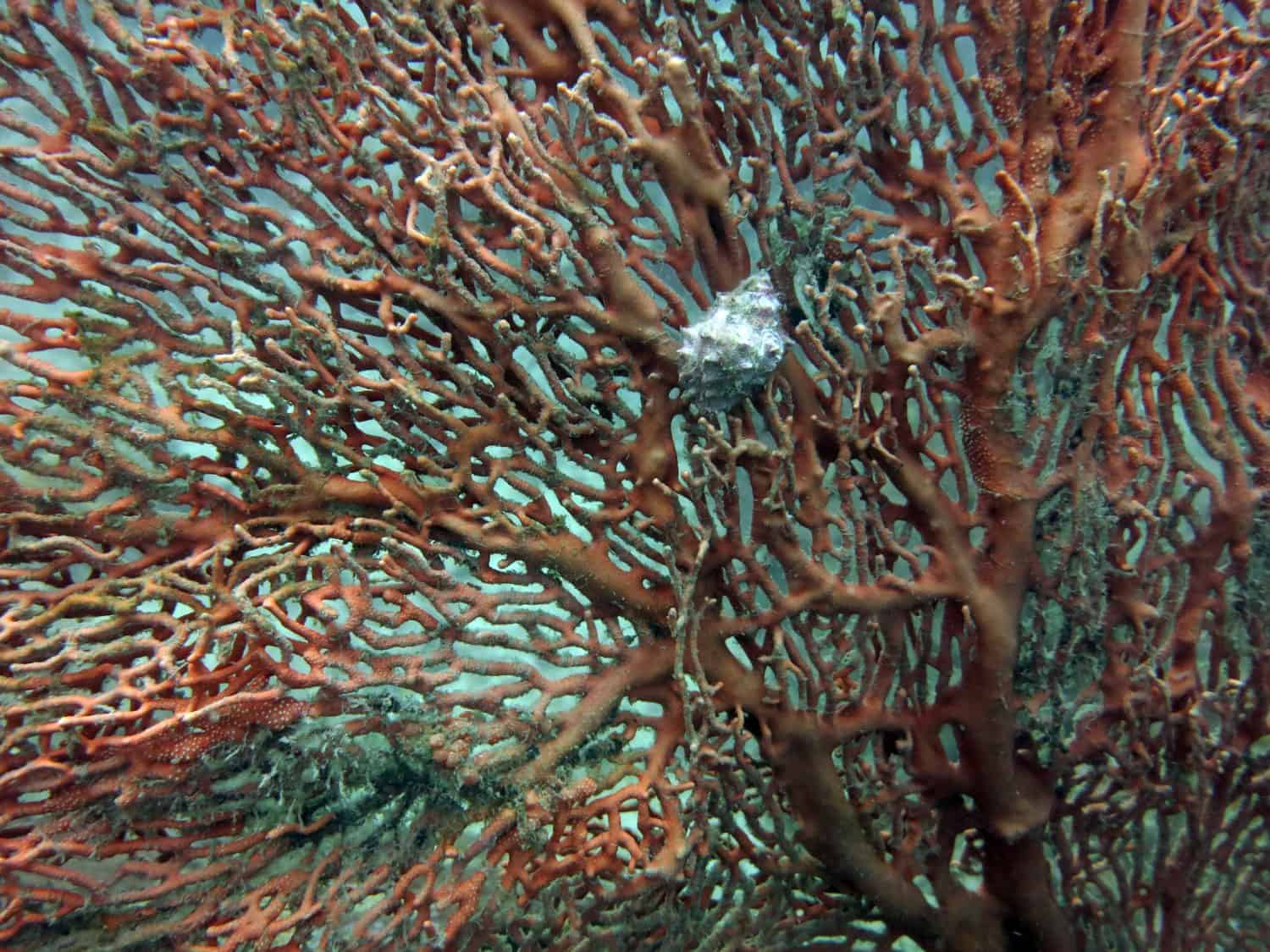
Some genera of sea snails, such as
Drupella, feed on the soft tissue of coral.
©Hamizan Yusof/Shutterstock.com
Some groups of sea snails are corallivorous, such as species within the Murciadae family of marine gastropod mollusks. Coral-eating species are especially prevalent in the genera Drupella and Coalliophila. These snails feed on live coral by stripping tissue from the coral skeleton and leaving white feeding scars. An overpopulation of coral-eating snails can cause an overabundance of algae to grow on the scars.
The photo featured at the top of this post is © slowmotiongli/Shutterstock.com
Thank you for reading! Have some feedback for us? Contact the AZ Animals editorial team.






